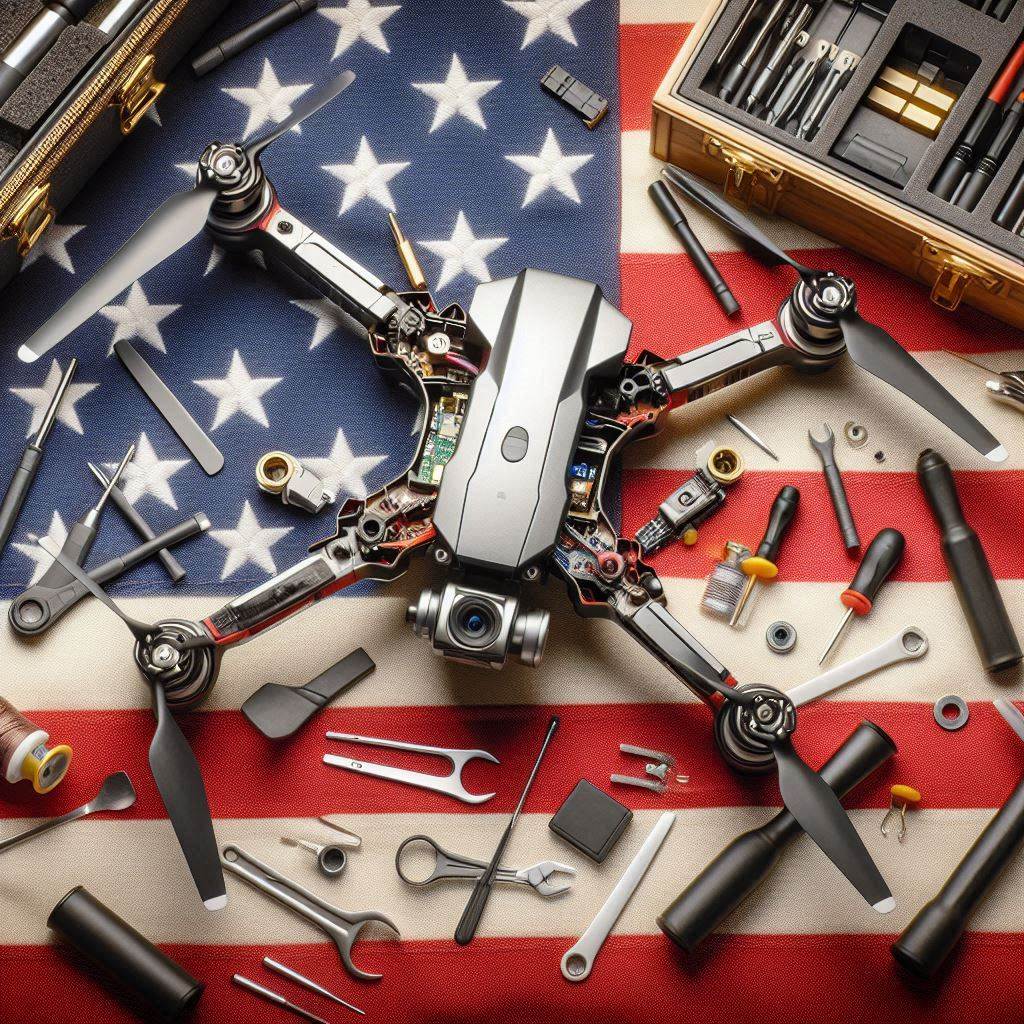SZ DJI Technology Co., Ltd known as today DJI is a major electronics manufacturer based in China as its largely credited with creating the consumer drone industry. While mainly known for making drones they have expanded their portfolio into many other industries such Camera Gimbals, Portable/Action Cameras,, Wireless Microphones and now Portable Power Stations.
While DJI’s core business remains drones they have diversified over the last 5 years into more of a lifestyle electronics company and is continuing that trend.
With the concern in the US other countries around data security and the threat China poses with the used DJI drones around critical infrastructure DJI is facing a possible ban in the US.
In the vast amount of speculation around this there has also been questions raised asking if DJI can survive without access to western components.
Today I am going to try and answer that.
DJI Now Vs Then
Historically DJI products were largely made from commodity off the shelf components most made in or IP owned by western companies, these consisted of the following
Arm based microcontrollers from ST Microelectronics – Flight Control.
Gyro & MEMS From invenSense (TDK) – Flight Control
Positioning Chipsets From UBlox – GPS.
Leadcore Arm chipsets & DSP – General Processing and RF.
Video Image processors from Ambarella – DVR
FPGA from Lattice – Image Processing & RF Heavy Lifting
Wireless chipsets from DaVinci and Artosyn – Lightbridge and Ocusync link.
Movidius/Intel – Object Sensing & VPS.
Power Management From Texas Instruments – Battery BMS and SMC.
Sram/Rom/EMMC from Elpida,MXIC, Micron,Samsung
However things have changed a lot in the last 5 years and DJI’s reliance on western components has reduced dramatically.
Next are some examples of DJI Drones and component supply changes over the past 7 years.
DJI Drones unto the DJI Phantom 4 largely had identical comment choiceand usage, while there was some varying of component selection with early Lightbridge the rest was largely the same.
Here you will see DJI use a fair mix of western components in their drones.
DJI Mavic Pro & Ocusync
The release of the DJI Mavic Pro was a big shift for DJI, while the drone was largely a more compact Phantom DJI Introduced Ocusync, their new wireless video system, this was based initially on off the shelf Leadcore chipset.
The Mavic Pro was the start of DJI starting to peruse more home grown alternatives with some components being marked DJI as well.
DJIs battery systems did still rely on management systems by Texas Instruments.
In 2019 DJI started to really move away from off the shelf commodity parts for core components and systems such as flight control, image processing and wireless video and moved to the use of custom ASICs into their products.
Their latest wireless system Ocusync and video image processing is now based on what we believe is their own in house custom Asics, this based on Arm Cortex MCU and Ceva DSP IP and is very similar in design to chipsets by Leadcore and later Artosyn.
I have a detailed write up on the history of Digital FPV and specifically DJI Ocusync and its chipset below.
History Of Digital FPV
DJI Ocusync History
For the basic microcontrollers they have largely stopped using ST Micro and where needed use the likes of GigaDevice and the DJI Air 2s is a great example of the move away from western parts for core components compared to the past.
DJI heavily reuses their circuit designs and chipsets in their drones and other products, as an example DJI Ocusync 2,Ocusync 3 based product uses either their P1 “Pigeon” chipset or its smaller brother the S1. Newer products with O4 now use their latest S2 variant and this chipset is one of DJI’s core technologies and is deemed as the “Crown Jewels”.
You will only find these chipsets in DJI designed products and makes them very identifiable.
The DJI Air 2 is a great example of the shift compared to previous models, while western components are still used the count has dropped dramatically.
DJI Component Reliance Today
The DJI Mavic 3 and DJI Avata 2 are some of DJI latest drones and they highlights just how far they have moved away from reliance on the west for key components in their drones
The Mavic 3 is full of custom ASIC’s such as the H6,E29, P1 Ect.
The new Avata 2 is a fantastic example of DJI’s ongoing reduction in component count and consolidation of systems running on their custom silicon.
In their cameras and imaging payloads DJI use either Sony image sensors from Japan or Omnivision Image Sensors from China’s.
In enterprise products due to export restriction on FLIR thermal sensors DJI transitioned to a china based equivalent some years ago again dropping more western reliance.
Summary
While this is only a small snapshot of DJI products the reality is today DJI is not heavily reliant on western component supply to be able to manufacture their products.
There are still some key western technology that DJI does still use such as MEMS from Invensense , GPS chipset from Ublox and advance power management components from Texas Instruments.
However controlling supply of these in the global component market would be close to impossible and DJI’s continued use of these components is as much due to them being “best in class” than a pure reliance.
China based alternatives do exist.
In the end DJI’s reliance on the west comes from sales more than anything else and DJI continue to be at the sharp edge of drone technology with the rest of the injury being at least 3 years behind.
Mad
Images Disclaimer
Images in this article have been sourced from multiple places many with unknown origins, some of my own, some are found on https://github.com/o-gs/dji-firmware-tools/wiki/ and others are unknown credit.
Discover more from sUAS News – The Business of Drones
Subscribe to get the latest posts to your email.

